Sizes of Lantana and Popular Varieties
You can find a lantana to suit most any sunny area you wish to plant in. The general growth habits consist of: common bushy upright, dwarf/compact mounding, and spreading or trailing. All mature growth of lantana will depend on care given and the elements, but the following are average heights and widths you can expect when figuring out the right size for your needs.
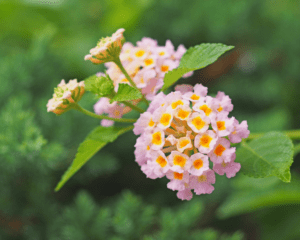



Common upright lantana have an average growth of 2’- 6’ tall x 2’- 6’ wide. You can see this has a wide range of mature growth because there are many varieties within this category. Always look up the specifications for your particular plant.
Common upright lantanas can be used as stand alone specimens or as shrubs in sunny areas. They also fill out a large container nicely. Some of our most popular sellers in this category include: Radiation, Confetti (spreads wider than grows tall), Pink Caprice, Salsa, and Irene. These are all non-native and produce seeds.
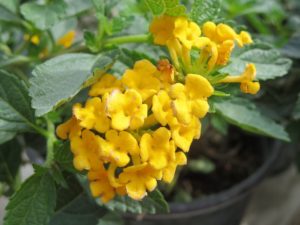

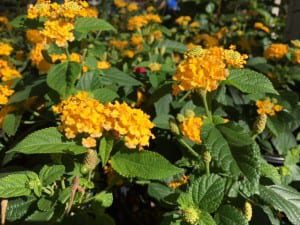

Dwarf/Compact lantana come in both mounding and trailing varieties. You can expect an average height of 1’-1.5’’ tall and wide for dwarf mounding, and 1’ tall and several feet of spread for dwarf trailing varieties. Dwarf varieties are great foreground perennials and make excellent selections for potted plants. Gold mound, New Gold (spreading habit, but also dwarf) and Patriot selections are some of the dwarf/compact varieties that are also considered non-invasive as they are not known to produce viable seeds. (More about that below.) Bandana, Dallas Red, Carlos, and Anne Marie are popular varieties at the nursery, but they do produce seeds.
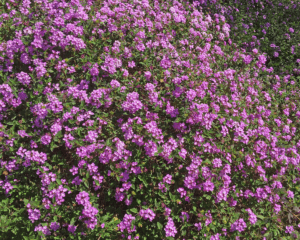



New Gold, Weeping Lavender and Weeping White are sterile varieties. Popular non-sterile varieties are Purple Trailing (Lantana montevidensis), White Trailing, Lavender Swirl.


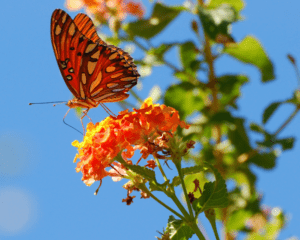

Sterile VS. Non-Sterile Lantana
Now a little about those seeds mentioned above. Keep in mind that Lantana camara varieties can be considered invasive due to the easy spread of the plants by birds eating their berries and depositing them all over the place. The plants can quickly invade areas of disturbed land and can take over, essentially choking out native plants. All lantanas have a toxicity level as well because of their leaves, but non-sterile varieties produce berries which are also toxic.
Good news though, new varieties of sterile lantana are becoming more common and easier to find. These sterile varieties of lantana do not form berries but still bloom just as profusely as non-sterile plants. Besides sterile varieties, you can also find native lantana (horrida/urticoides) commonly in stock. If you are concerned about the spread of non-native plants, native or sterile plants are best followed by dwarf/compact varieties because they produce fewer berries than other lantana. New Gold, Dwarf Pinkie, Samantha (Lemon Swirl), Weeping Lavender and Weeping White are all sterile varieties, while Texas lantana is a native.
How to Care for Lantana
All lantanas prefer sun, and well-draining soil. They are heat and drought tolerant once established, deer resistant with minimal other pest or disease issues (though lace bugs can often target them). Lantanas can be pruned modestly throughout the growing season for a more compact, bushier growth. Late winter or early spring, they can be cut down to the ground to remerge once weather warms up. A thick layer of mulch protects the roots of lantana through winter from temperatures that get colder than 28°.

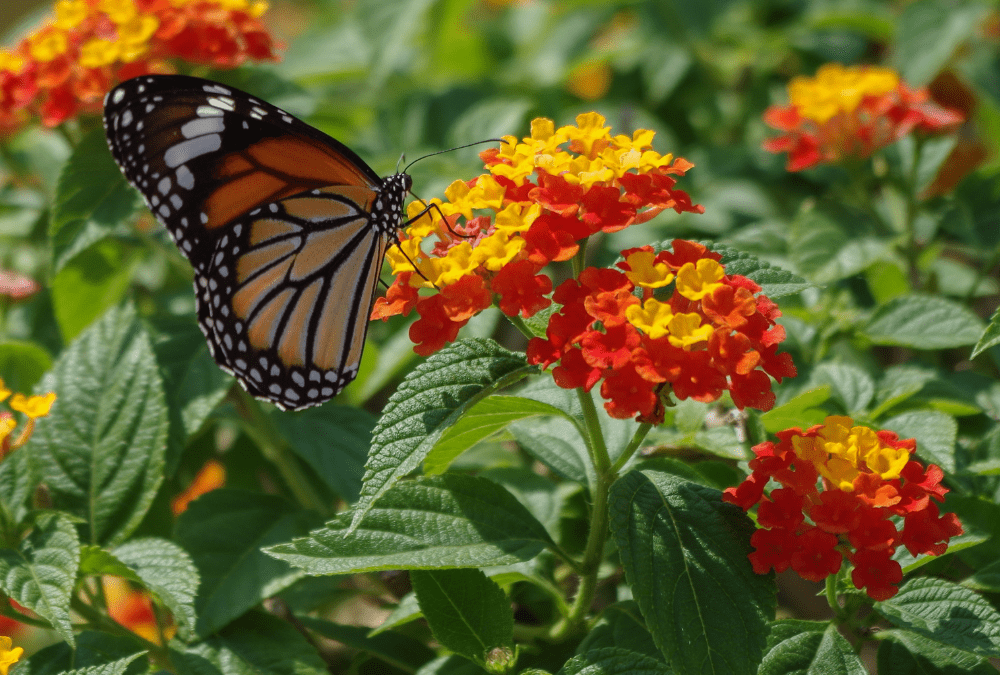
I bought several pots of lantana without any tags as to which kind they are. Some are growing faster than others and aren’t blooming very much. Any suggestions?
If they were bought from us, the pots should have the names written on them even if there weren’t tags in the plants. Perhaps on the ones that are blooming you could take a picture of the color and that might help. Even though these are heat tolerant plants, the extreme drought and super high temperatures we are experiencing may slow the growth and blooms down some, but they will take off again soon. Offer a liquid fertilizer and make sure to water before and after feeding it and see if that may help. What kind of light exposure are they getting? Full sun?
Thank you so much for your information. Dince we’ve been getting several good rsins, and thw lantana finally getting started roots in the pots, they are all blooming vety good. I’m just not sure which type they are, although 4 have yellow flowers and one has pink. The garden center I bought them from has beautiful plants and flowers but they are only open about 2 to 3 months.
Hi Romona,
Glad to hear your plants are thriving. As far as the yellow lantana, you can distinguish if they are New Gold if they do not produce berries. If they do, they are some other variety. As far as the pink, there a a ton of pink varieties out there so it is hard to tell you which type you have.
When you say winter pruning what month do you suggest, I live in Canyon Lake and my Lantanas are taking over and still have many flowers
Late winter/early spring pruning, like in late February most likely but depending on the weather (when chances of frost have passed).
I bought a I bought a blooming rose lantana from leaf and pedal. I did not realize that it was an annual and not a perennial lantana. I live in San Antonio, Texas, will this die at the end of one season
Hi Olga,
I think you meant a Bloomify Rose lantana? These are actually perennials, not annuals. If you live in San Antonio, Texas, lantana are perennials. Your plant should bloom late summer through fall, and as long as we have a mild, normal winter, the plant will come back from the roots in mid spring next year.